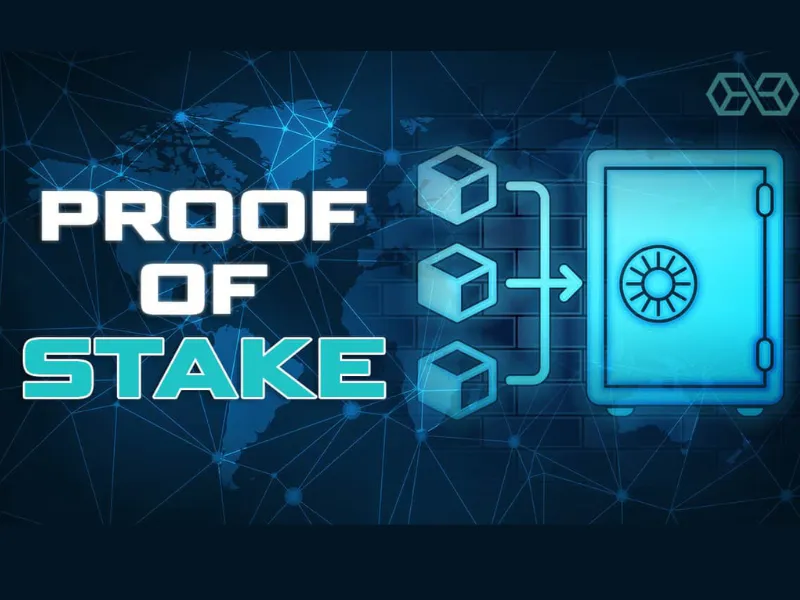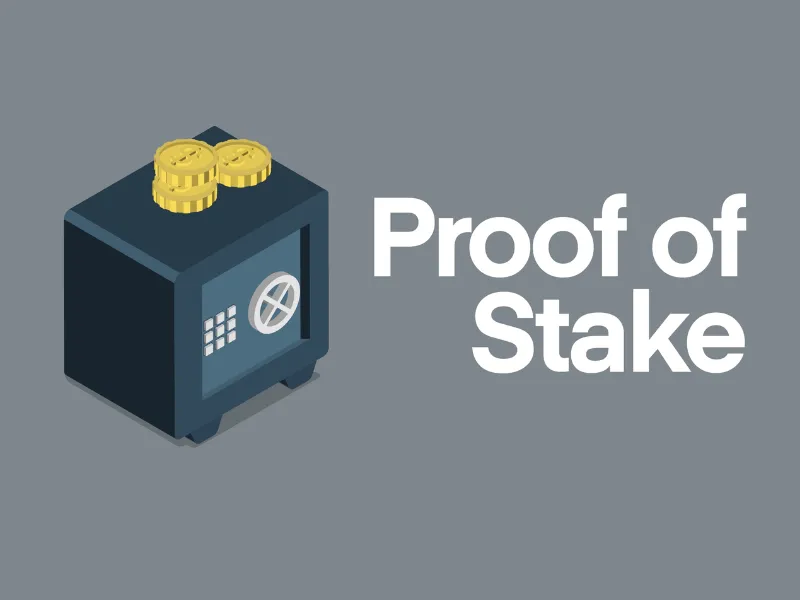Proof Of Stake (POS) and Proof Of Work (POW) are now familiar concepts to many investors because they can generate profits without engaging in high-risk investment activities. Compared to POW, POS has many advantages that POW does not address. So what is Proof Of Stake? How does it work? How to mine coins and advice from experienced investors… all will be covered in the following article.
What is Proof of Stake (POS)?
Proof of Stake (abbreviated as POS, translated as proof of stake) is simply an algorithm used for coin mining based on stakes.
This algorithm works similar to saving money in a bank, where you deposit coins and earn interest in coins. Depending on the type of coin, the interest rate and staking period vary.
For example: a coin pays 10% per month, and you deposit 100 coins. You will earn 10 coins each month, ending up with 110 coins.
How does Proof of Stake (POS) work?

Proof of Stake (POS) was created to address the shortcomings of the Proof of Work (POW) process.
When a user performs a transaction, the transaction information is recorded in a block and then replicated across network nodes.
Each node in the network is a component of the blockchain helping to verify the transparency of the transaction made by the user.
To verify, nodes or users must solve a computational problem, also known as proof of work.
Users who solve all the issues of the initial blockchain are rewarded with coins. Once verified, the transaction is recorded in the Blockchain ledger.
The process of solving blockchain problems consumes a lot of computational energy, which is drawn from electric power, leading to rapid depreciation of digital currency value.
To overcome this, POS or proof of stake was born. By shifting the computational power used in POW according to the amount of money a user stakes.
Thus, instead of using energy to perform calculations in POW, a POS user focuses on using a percentage of transactions that reflect the shares they hold. For instance, a user with 7% Bitcoin might only use 7% of the blocks.
Notable advantages and disadvantages of Proof of Stake (POS)
Advantages
- POS helps increase your coin volume. Even if you do not use coins for investment, mining coins still provides monthly income and is unaffected by market volatility.
- Mining coins only requires a regular computer with internet connection 24/7.
- POS is becoming a new trend, with many coins updating this feature.
Disadvantages
- The interest rate is only an estimate, not guaranteed. For example, Coin X theoretically pays 20% per month but in reality, it may only pay 15-16% per month.
- Mining coins is not guaranteed to be profitable; if the Stake rate is lower than the coin’s slippage rate, you will not earn profit.
For example: you deposit 100 Coin X at $1 each, with a fee of $100 and a Stake rate of 10% per month. In the first month, you will earn 10 coins, but if the price of Coin X in the next month drops to $0.5 per coin, totaling 55$, you lose $45.
How to mine POS coins

Step 1: Purchase coins on the market with the amount you want to stake.
Step 2: Synchronize your coin wallet with your computer, depending on the type of coin.
Step 3: Keep your computer running to sustain staking.
Step 4: Keep the coins in the wallet for a period, during which the coins will develop.
Step 5: If you no longer want to stake, you can transfer coins from the wallet to an exchange and sell.
Useful tips for coin mining
Basically, Proof of Stake is an algorithm for coin mining based on staking.
Therefore, how many coins you mine depends on the amount of coins you send and the Stake percentage of that coin.
For example: with EMB coin at 7200% per year, and Buzz coin at 1200% per year…
However, just depositing coins in a wallet and running a device 24/7 does not necessarily mean you will earn as much as these rates suggest.
If you want higher returns, you need a higher weight to compete with other stakers, enabling you to win blocks and earn coins.
About Weight and coin age
Weight can be understood as the age of the coin and the amount of coins used for staking.
Coin age is the time during which your coins in the wallet can develop; the length varies depending on the type of coin.
As coins reach a certain age, the weight increases, implying more opportunities to win blocks.
However, on initial days, coin mining is slow; until the first block is produced when the coin reaches sufficient weight, only one block can be mined. Over 1-2 weeks, profitability stabilizes, and during staking, no coins are added or removed.
Conclusion
This article provides you with basic information about Proof Of Stake, including what POS is, how it works, its advantages and disadvantages, how to mine POS coins, and advice from seasoned investors. Hope these are the insights you need for your work.






